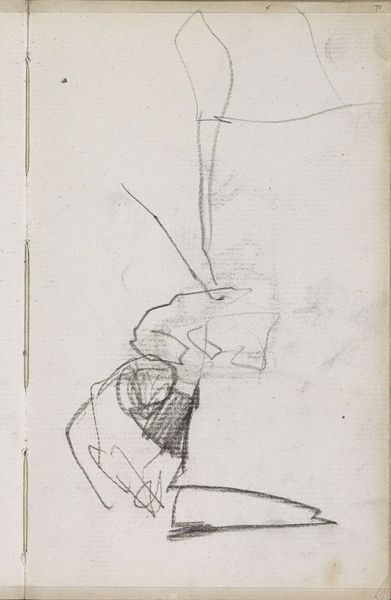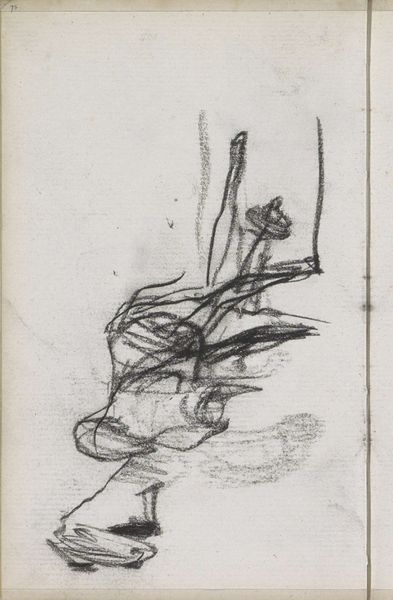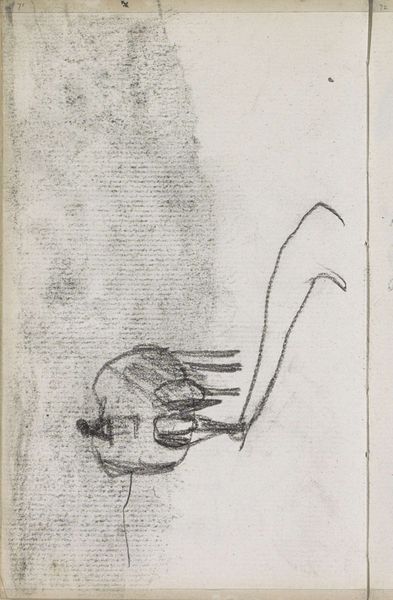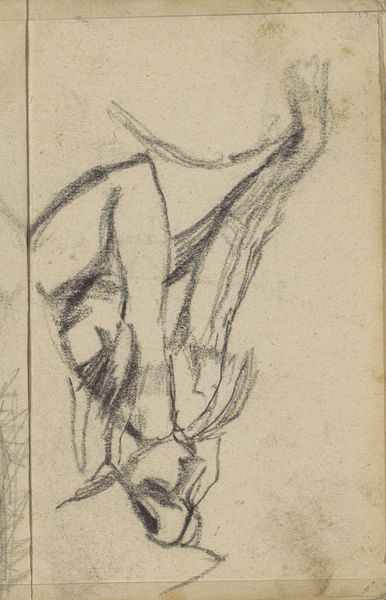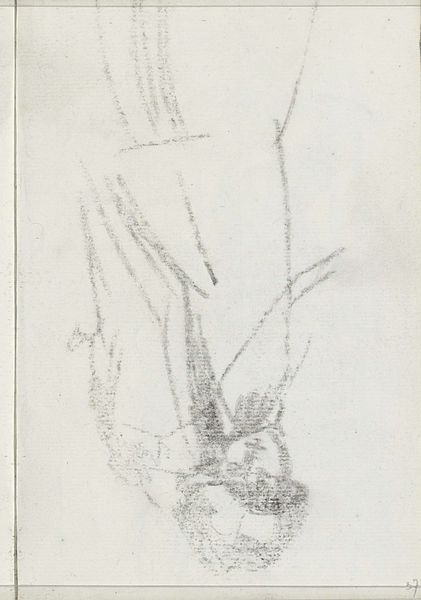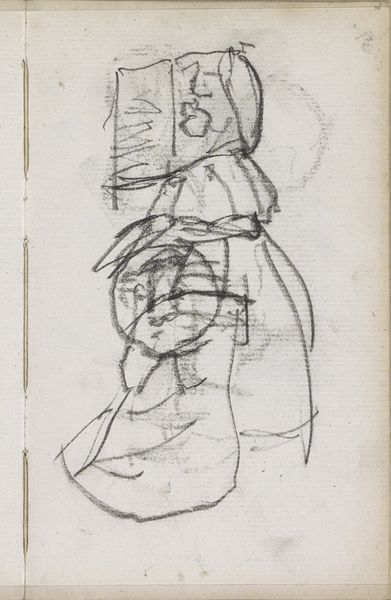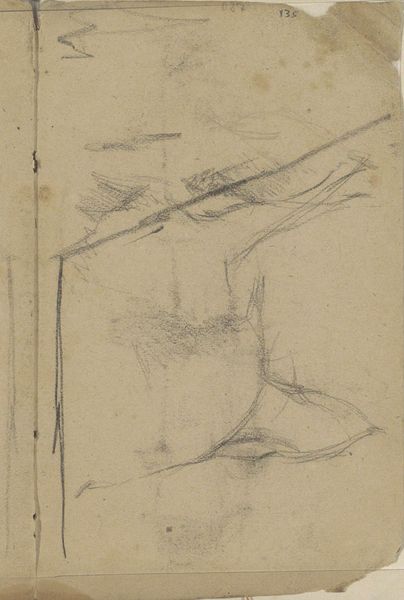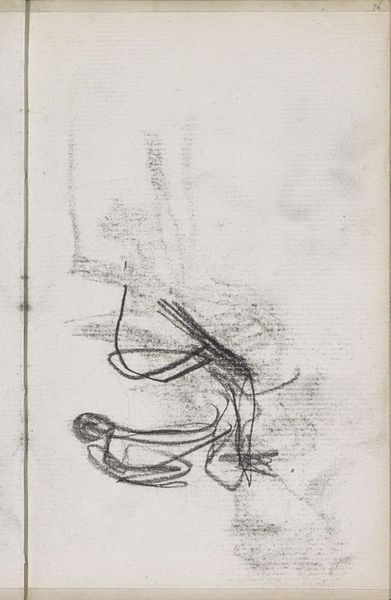
Studie, mogelijk van een liggend dier in een landschap 1884 - 1886
0:00
0:00
drawing, pencil
#
drawing
#
impressionism
#
pen sketch
#
landscape
#
figuration
#
pencil
Copyright: Rijks Museum: Open Domain
Editor: Here we have George Hendrik Breitner's "Study, Possibly of a Reclining Animal in a Landscape," made between 1884 and 1886 using pencil. It has a certain ephemeral quality, like a fleeting moment captured in a sketchbook. What strikes you about this work? Curator: For me, the significance lies in understanding Breitner's artistic process and how his materials shaped his output. This is not a finished work for the salon, but a working drawing; a means to an end. Notice the rapid application of the pencil; the labor is evident, immediate. Editor: So, you are saying the real value lies in the artist's labour with his materials? Curator: Exactly. Breitner, a contemporary of the Impressionists, was interested in capturing modern life, urban scenes, often using photography as source material. How do these sketches reflect this? Pencil allows for easy erasure and changes on-site compared to other mediums, aiding fast iteration and adapting to new compositions, which could suggest the artist desired to represent fleeting movement. Do you think the speed of the medium affects the output of the art? Editor: That's fascinating. It highlights how the constraints and affordances of the chosen medium, in this case pencil and paper, impacted Breitner's artistic choices and working methods. Curator: The ease of sketching allowed him to quickly iterate, explore, and experiment without committing to more time-intensive or expensive processes such as painting. What do we make of his focus of landscape, here, with hints of a reclining animal figure that you suggest. How did Breitner manage to negotiate commercial opportunities as he focused his labour in quick sketching, or even photography? Editor: Looking at it that way, it becomes a document of artistic labor rather than a simple depiction of a scene. It re-contextualizes how we consider his complete artworks! Thanks for the insight. Curator: Precisely. Seeing art through the lens of production really changes your relationship with the artwork.
Comments
No comments
Be the first to comment and join the conversation on the ultimate creative platform.

